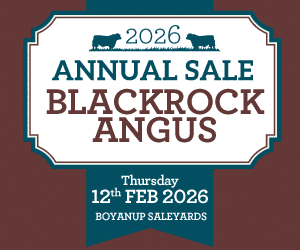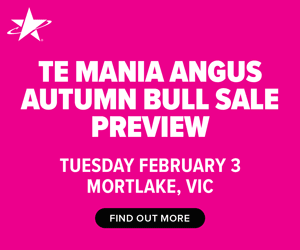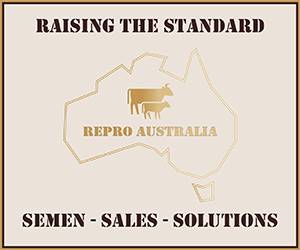We have previously identified why you need to market your stud, brand or farm, this article will focus on setting your brand apart from your competitors.
When considering branding yourself or re-branding yourself, it is important to consider more than just the aesthetics and define what it is you want to say about yourself and your brand. By creating a good brand you can create an awareness within the beef industry that it is distinguishable as you.
So what is branding?
Branding can be an extremely vague term, even for marketers and designers. Essentially branding gives meaning to specific products by creating a distinct association in the consumers mind, and clarifies who the brand is and who it is not.
Branding encompasses both the practical and emotional aspects of a product. For example, you may market your bulls as be ready to work (practical) but in a stud setting they become an animal you depend on (emotional) so it is important to consider both aspects.
Both practical and emotional responses should be triggered when consumers are exposed to any part of your branding identity.
An excellent example of this is car brands. Holden and Ford have equivalent products however most people will feel a particular connection to one or the other. To further this example, different car companies have branded themselves to evoke specific feelings for key associations;
- Landcrusier’s are built for hard work (practical) and resonate with the idea of country living (emotional)
- Ferrari’s are built to be powerful (practical) and evoke a sense of success and power (emotional)
- Mazda’s are generally built and marketed as a family car (Practical) and evoke a sense of safety and family bonding (emotional)
You can see that they are all the same product on a basic level – they are all vehicles designed to take you from point A to B, but the branding is what differentiates who the consumer is and targets them accordingly.
Further to that they all appeal to a consumer on a practical and emotional level, as all good branding strategies should do.
When it comes down to it a brand will influence someone’s basic instincts about a company, person or stud, and the success of that business will decrease or increase as a direct result of this.
The ultimate aim of creating a brand is to attract and retain customers, which is done by delivering your product in line with any brand impressions or promises. In its simplest form, your brand is the image you create for your product and branding is the strategy which you use to create that image.
4 ways to set your brand apart
A branding identity covers – at a minimum- a name, logo, a key message or tagline and a visual identity. Not all branding is created equal, so it is important to maintain a clear vision of what your ultimate goal is.
- Know your Audience: Earlier we talked about a two-prong approach of targeting the practical and emotional nature of consumers. In order to do this successfully you need to examine who you are actually targeting. How old are they? Where do they live? What do they do in their spare time? What is their livelihood? All these things and more will influence how you develop your brand. It may be helpful to characterise the different groups of people you are targeting and create a customised approach to each, while sticking to your overall branding strategy.
- Identify what sets you apart: What makes you or your business individual? Is it a certain strength in your business, like customer service or is it how you raise your bulls as grass-fed only? It is important to guide people to your brand by showing them what it is about you, and you only, that is worth them looking at.
- Do your research: Do your research and see what your competition has done, see how good branding has helped them as well look at how bad branding could be setting them back. You can also research graphic approaches as inspiration for the brand identify you are going to create. It is worth researching colours that will resonate with your business, as different colours evoke specific emotional responses.
- Don’t settle for standard: When it comes to the design side of your brand, there is no need to settle. If you don’t have the skills to create your brand identity yourself, I highly recommend outsourcing the design aspect to a good graphic designer as most are trained in design thinking which will help you develop a more professional and effective brand. If you do have the skills but lack the creative flair, simple things like fonts can instantly boost your look, and set you apart from competition. Try to look past the Microsoft stock standard fonts and look at buying a quality font that will make the design more individualised. Font and graphics sites such as The Creative Market and My Fonts have lots of options and are reasonably priced. It is best to look at branding as an opportunity to distinguish yourself in your chosen market, and not an obstacle you need to jump over. It is an opportunity to show the world who you are and what you can do for the world.
Help your designer help you
Preparation can go a long way when working with others, and this is especially important when you are paying by the hour for a result. Whether you are using a graphic designer for your graphics or not, these principles should be considered before starting any design, and could potentially save you money by giving a realistic expectation of what is possible.
To create a dynamic and engaging graphics there are a few things you need to think about:
- Size – be realistic about your content to information ratio.
- Colour – will this be seen in colour or black and white?
- Content – should be clear and not misleading, there is no room for misunderstanding when you are paying to advertise or represent your brand.
- Keep it simple – limit the amount of text, make it concise in order to get your key messages across. If you are concerned with the amount of space for what you want to say, explore different advertising options before you commit.
- Consistency – is this a one off? If you know a design needs to be resized to multiple sizes and formats, speak up at the beginning. Designing with this in mind can lead to some really powerful and engaging graphics.
- Keep an open mind – consider what you need to achieve with your graphics and be open to ideas, change can be refreshing.
If you have any questions or have content suggestions please contact design@angusaustralia.com.au
Feature Image: four ways to set your brand apart








